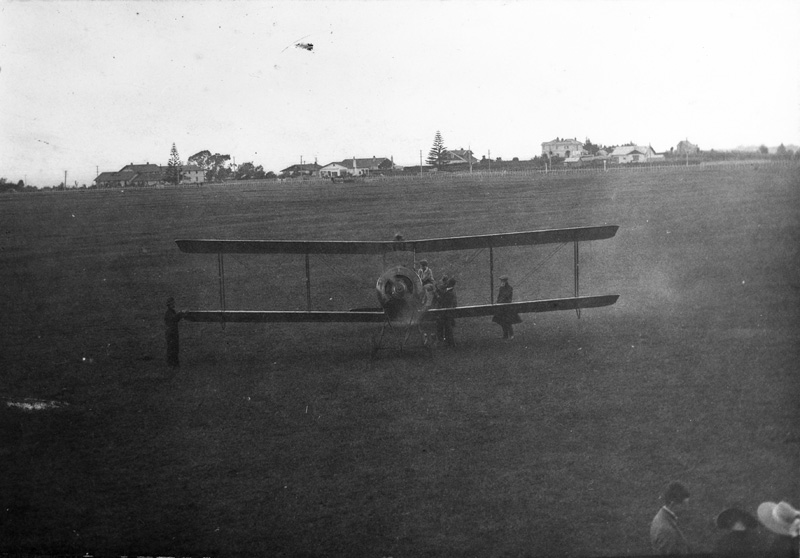
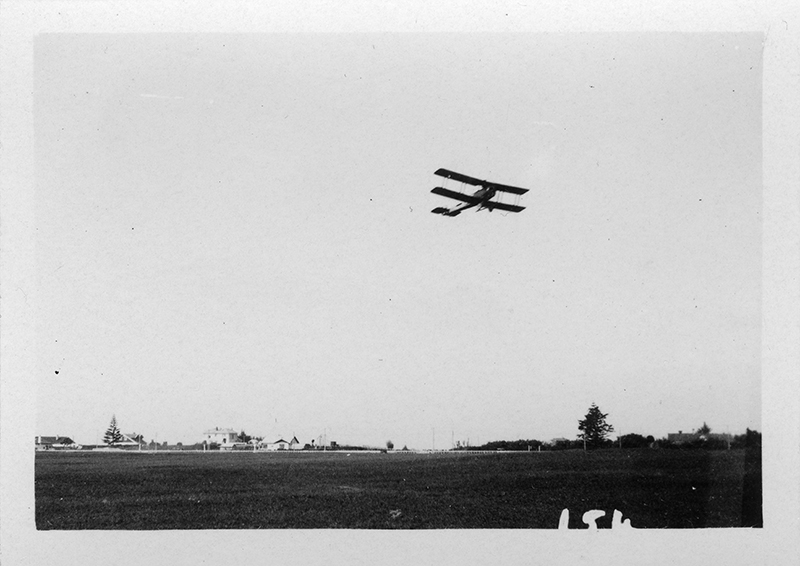
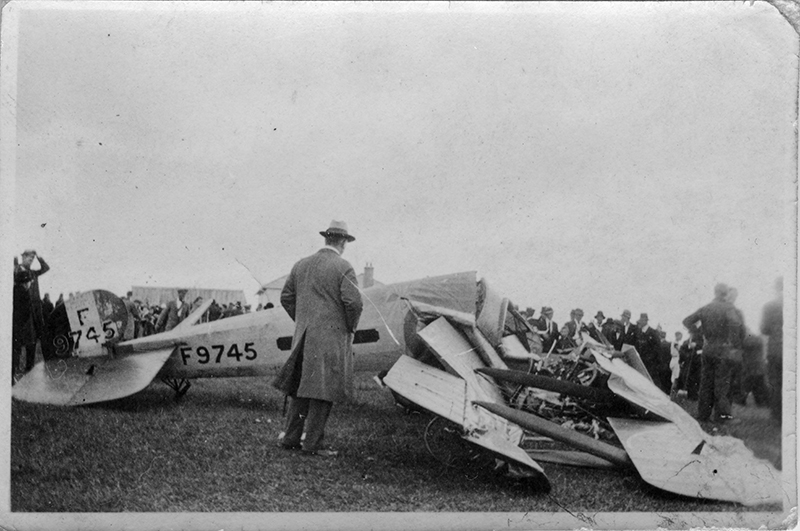
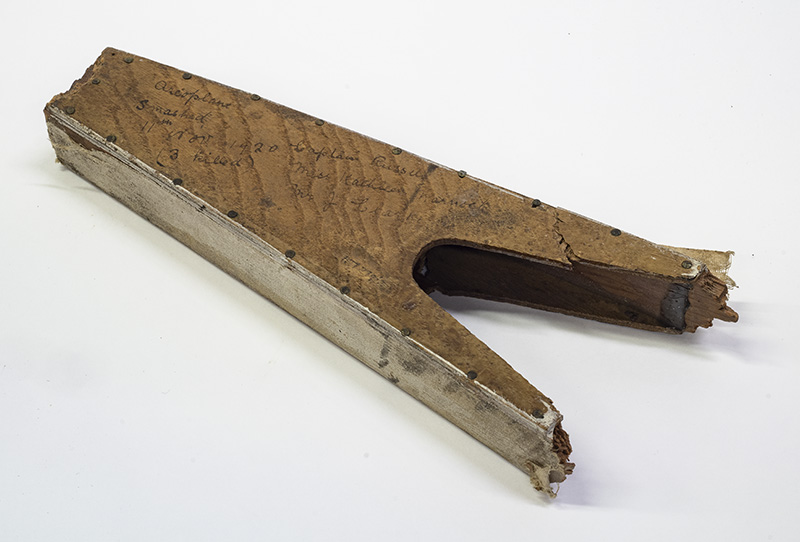
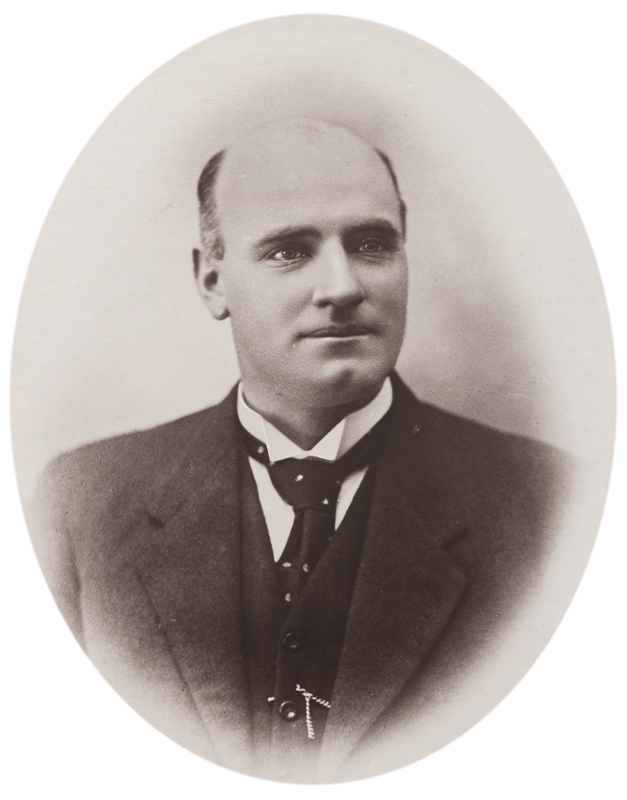
Armistice Day 1920 was a time of celebration in New Plymouth - but the day was to end in tears. The public holiday, commemorating the end of World War One, began brightly with Captain Richard Russell taking scenic flights over the town in his little biplane. In the afternoon, holidaymakers climbed the Boys’ High School hill to see Captain Russell loop-the-loop and carry out other thrilling manoeuvres in the air.
The biplane had arrived in town three days earlier - the first aeroplane to fly into New Plymouth - creating a ripple of excitement. A large crowd had gathered on the New Plymouth racecourse in anticipation. World War One had stimulated New Zealand's interest in flying. The tales of daring and dangerous ‘dogfights’ above France and Flanders were well known, the Red Baron a popular schoolboy hero.
The little Avro 504K biplane, which belonged to the Walsh Brother's Flying School, and its crew were ‘barnstorming’ the country, flying from town-to-town giving demonstrations and offering flights. It was flown from Palmerston North to New Plymouth by 23-year-old World War One pilot Captain Richard Russell, holder of the Distinguished Flying Cross and Croix de Guerre. He was accompanied by two other pilots Goring and Dexter, while the plane's mechanic Mr Ross, travelled by train.
Schools had announced a half day off for the event, and hundreds of children joined the crowd on the racecourse waiting for the arrival of the plane. A roar went up as the little aircraft finally flew into sight, the puttering of the engine growing closer. Captain Russell landed with a flourish before taxiing up the racecourse to stop in front of the awestricken crowd. It was late, and fuel was low, so there was only time for three double-circuit flights over the course before the disappointed crowd were sent home.
But the next three days made up for that - people grew used to the sight and sound of the little aeroplane and its route over the town, then across the Boys' High School farm, before landing again on the racecourse. An eager group of people waited patiently for their turn to hand over money for a turn on a scenic flight. Warnings went out to parents about the potential harm of 'aeroplanitis' and 'aeroplane neck' as schoolboys spent much of their time looking at the sky.
On 11 November a large crowd gathered in anticipation of an exhibition flight by Captain Russell. The captain took the opportunity to show off his skills - performing an exhilarating stunt flight, looping the loop, somersaulting, rolling and spiralling far above the crowds' heads.
The biplane had taken 16 flights that day and it was time for it to fly on to its next destination as Captain Russell wanted to arrive before dark. But he had to take to the air one last time before leaving. The Mayor of New Plymouth, James Clarke, had not yet had a flight. The mayor was helped into the plane and Captain Russell chose a young lady from the crowd to fill the other empty seat. Kathleen Warnock was a 25-year-old chemist shop assistant.
The propeller was spun, the engine coughed into life and a throaty roar was heard as it taxied down the racecourse before rising into flight. Captain Russell took the usual circuit over the town and the school farm before lining up to land against the wind. The people gathered on the Boys' High School hill heard the aircraft roar overhead and could only watch in horror as it banked hard before spinning in a rapid dive. The pilot appeared to fight for control before the little plane nosedived to the ground with a resounding crash.
"A horrifying shudder went through all those who saw and heard" reported the Taranaki Herald. The crowd rushed to the scene, but were held back by those who had arrived earlier. "The scene was one which those who saw will never forget. The tail piece of the plane appeared little damaged, but the back of the machine had been broken, and the forward part and wings were smashed to pieces. The bodies of the victims were extricated from the debris and covered over by kindly hands, once it was realised that nothing could be done with them. Captain Russell's hands had still been grasping the master control lever... in a vain attempt to lift the machine out of its spin."
"Those who were earliest at the place where the machine fell stated that Captain Russell's mouth moved as if in an attempt to speak, and Mr Clarke moaned and seemed to try to speak, but both expired almost immediately. Miss Warnock, who occupied the centre seat in the machine, was quite dead when picked up. The bodies were quite badly mutilated, particularly that of the pilot, who must have received the full force of the impact of the engine against his body... it was noted that his watch had stopped at 4.10."
An inquest was held that night with the coroner concluding that the crash was an accident. A gust of wind had caught the machine as it was coming in to land, causing the Captain Russell to lose control. As the plane was low to the ground there was not time for the pilot to recover height before crashing.
Ironically Captain Russell had survived the ravages of World War One, only to die on Armistice Day in a New Plymouth paddock from a gust of wind. Mayor James Clarke had been popular, his stalwart figure and cheery smile were familiar to all in the town. His death, leaving a widow and two young daughters, plunged New Plymouth into sadness.
New Plymouth's first visit by an aeroplane had resulted in its first air disaster. It was the first aviation fatality in the North Island and only the second in New Zealand.
Search the Puke Ariki Heritage Collection
LinkPlease do not reproduce these images without permission from Puke Ariki.
Contact us for more information or you can order images online here.